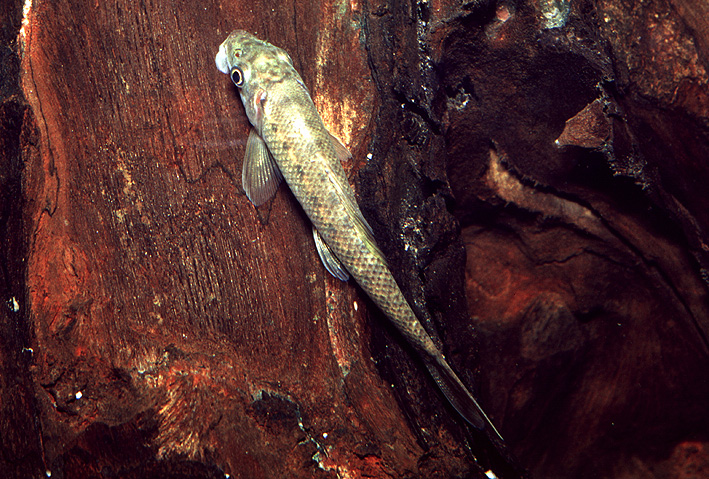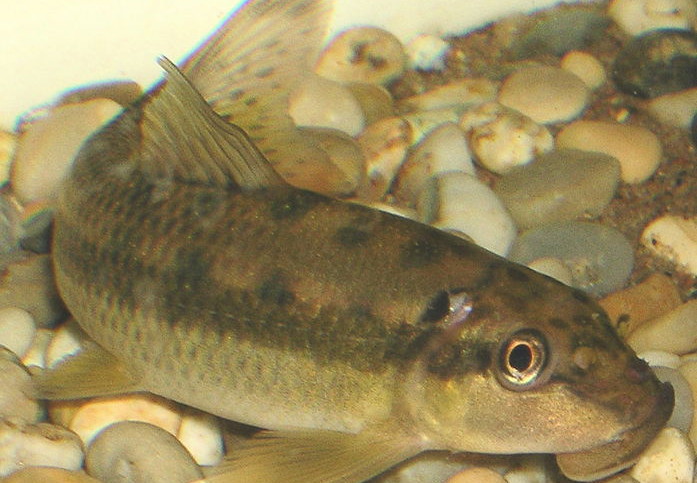honey sucker
| Scientific name | Gyrinocheilus aymonieri |
|---|---|
| Descriptor | Tirant |
| Year of description | 1883 |
| IUCN category (World) | LC |
| Family | Gyrinocheilidae |
| Genus | Gyrinocheilus |


Introduction
Gyrinocheilus aymonieri, commonly known as honey sucker, is a fresh water fish from the Asia.
This sheet is currently being prepared. The texts currently proposed come from our data model or are being drafted. To request priority for this content, you can write to us HERE.
Who is it?
Morphology
-
Type
-
Average size13 cm
-
Maximum size28 cm
-
Longevity5 year
-
Type
-
Average size13 cm
-
Maximum size28 cm
-
Longevity5 year
How to recognize This fish ?
The honey sucker measures between 13 and 28 cm. This fish is bicolore with a predominantly argent and noir body.
Behaviour & Life cycle
-
dietherbivorous
-
Sociabilitysolitary
-
territorialNo
-
Way of livingdiurnal
The honey sucker is a fish solitary naturally found on the bottom. This species is herbivorous .
n general, this species does not care much about other animals crossing its path.
Reproduction
-
Reproductiondont le mode de reproduction est encore inconnu
The honey sucker is a fish dont le mode de reproduction est encore inconnu.
Harmless species
This species does not represent any particular threats to humans when encountered in its natural environment.
Origin and distribution
What is its habitat?
Natural environment characteristics
-
Temperature24 - 28 °C
-
pH (acidity)6.5 - 8
-
gh (hardness)5 - 18
-
FlowStrong
Biotope presentation
The honey sucker prefers well oxygenated waters in current areas and rapids. It frequents fast flowing waters where the bottom is strewn with pebbles, wood or leaves carried by the current. It can be found not far from waterfalls and in mossy areas nearby.
This animal evolves in areas characterized by a strong presence of vegetation (aquatic and marsh plants, decaying organic matter, roots...).To go further
Sources & Contributions
Participation & Validation
The Fishipedia team and specialist contributors are committed to providing high-quality content. However, although the information comes from scientific sources or testimonials from specialists, the cards may contain inaccuracies.

Robert Allgayer
Translation
Translation done with the valuable contribution of our translators, who make this information available to a wider audience. We sincerely thank them for their commitment.
In collaboration with : Fédération Française Aquariophilie
Scientific partners










